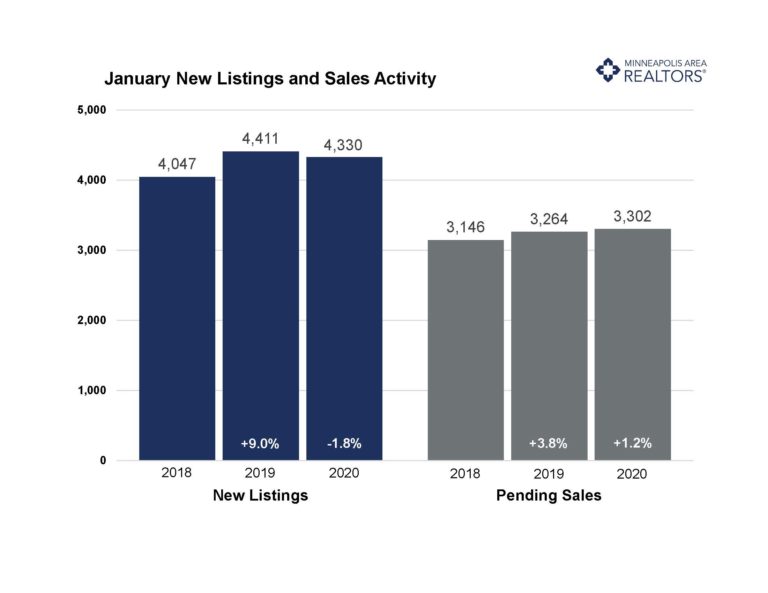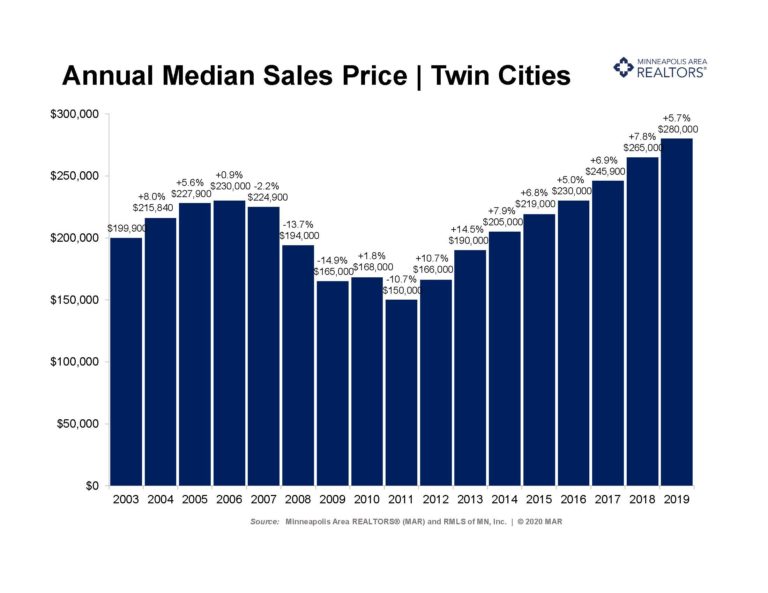
For Week Ending March 7, 2020
A report released this week from property management software firm RealPage predicts a total of 371,000 new apartments to enter the market in 2020, which would be the highest level across the country’s 150 largest apartment markets in three decades. Nationwide there is still a significant housing shortage and so increases in any housing type can help reduce pressure throughout the market.
In the Twin Cities region, for the week ending March 7:
- New Listings increased 31.1% to 1,755
- Pending Sales increased 23.2% to 1,162
- Inventory decreased 11.0% to 8,001
For the month of February:
- Median Sales Price increased 6.2% to $281,500
- Days on Market decreased 2.9% to 67
- Percent of Original List Price Received increased 0.3% to 98.0%
- Months Supply of Homes For Sale decreased 11.1% to 1.6
All comparisons are to 2019
Click here for the full Weekly Market Activity Report. From MAAR Market Data News.





